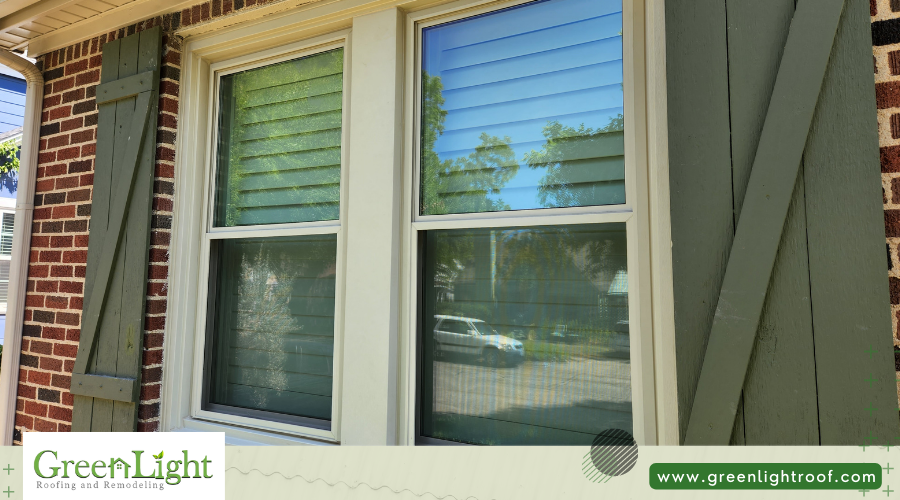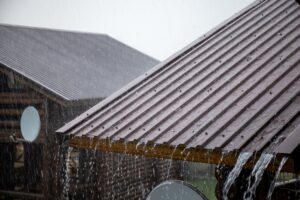Double hung windows are a popular choice for homeowners due to their versatility, easy maintenance, and classic look. But with so many different types of windows available, it can be difficult to know if double hung windows are the right choice for your home. In this article, we will provide a comprehensive guide to double hung windows, covering everything from their history to their benefits, installation, maintenance, and more.
History of Double Hung Windows
Double hung windows have been around for centuries, with some of the earliest examples dating back to the 17th century. They were originally designed as a way to bring in fresh air while keeping out rain and insects. Early double hung windows were made with wooden frames and panes of glass that were held in place with putty.
Anatomy of Double Hung Windows
Double hung windows consist of two sashes that slide up and down within the frame. The sashes are usually divided into two or more panes of glass, known as “lights.” The upper sash is typically fixed in place, while the lower sash can be moved up or down to adjust the amount of ventilation. Some double hung windows also have a tilt-in feature that allows for easy cleaning of the exterior glass.
Benefits of Double Hung Windows
There are many benefits to choosing double hung windows for your home, including:
- Versatility: Double hung windows can be customized to fit any style of home and come in a wide range of sizes and materials.
- Easy Maintenance: Double hung windows are easy to clean and maintain, with many models featuring a tilt-in function for easy access to the exterior glass.
- Improved Ventilation: Double hung windows allow for excellent ventilation, with the ability to adjust the amount of airflow by moving the lower sash up or down.
- Energy Efficiency: Double hung windows are highly energy efficient windows, with many models featuring double or triple-pane glass, low-e coatings, and insulated frames.
- Increased Security: Many double hung windows come with locking mechanisms that provide added security and peace of mind.
Types of Double Hung Windows
There are several different types of double hung windows to choose from, including:
- Single Hung Windows: Similar to double hung windows, but with only one movable sash.
- Double Tilt Windows: Double hung windows that can be tilted in for easy cleaning.
- Triple-Pane Windows: Double hung windows with three panes of glass for increased energy efficiency.
- Custom Windows: Double hung windows that are custom-made to fit unique or non-standard openings.
Materials Used for Double Hung Windows
Double hung windows can be made from a variety of materials, including:
- Wood: Classic and traditional, but require regular maintenance to prevent rot and deterioration.
- Vinyl: Durable and low-maintenance, but may not have the same aesthetic appeal as wood windows.
- Aluminum: Strong and lightweight, but may not be as energy efficient as other materials.
- Fiberglass: Strong and energy-efficient, but can be more expensive than other materials.
Cost of Double Hung Windows
The cost of double hung windows can vary depending on a variety of factors, including the material, size, and features. On average, homeowners can expect to pay between $400 and $800 per window for standard double hung windows, with custom or high-end models costing upwards of $1,000 per window.
Energy Efficiency of Double Hung Windows
Energy efficiency is an important consideration when choosing double hung windows, especially for homeowners looking to reduce their energy bills and environmental impact. Many double hung windows feature:
- Double or Triple-Pane Glass: Multiple panes of glass help to insulate the window and reduce heat transfer.
- Low-E Coatings: Low-emissivity coatings help to reflect heat and ultraviolet rays, improving energy efficiency.
- Insulated Frames: Insulated window frames made from materials such as vinyl or fiberglass help to further reduce heat transfer.
When shopping for double hung windows, look for models that are ENERGY STAR certified for maximum energy efficiency.
Installation of Double Hung Windows
Installing double hung windows can be a DIY project for experienced homeowners, but it’s often best to hire a professional to ensure proper installation and prevent damage to your home. A professional window installation typically includes:
- Removing the Old Window: The old window is carefully removed from the frame and disposed of.
- Preparing the Opening: The opening is cleaned and prepared to receive the new window.
- Installing the New Window: The new window is carefully installed, leveled, and secured in place.
- Sealing and Finishing: The window is sealed to prevent air and water infiltration, and any necessary finishing work is completed.
Maintenance of Double Hung Windows
Regular maintenance can help to keep your double hung windows in good condition and extend their lifespan. Some tips for maintaining your double hung windows include:
- Clean the Glass: Clean the glass regularly with a non-abrasive cleaner to keep it clear and free of smudges.
- Lubricate Moving Parts: Lubricate the moving parts of the window with a silicone-based lubricant to keep them moving smoothly.
- Check Seals: Inspect the seals around the window regularly and replace any that are damaged or deteriorating.
- Check for Damage: Inspect the frame and sashes for damage right size double hung windows to ensure a proper fit.
- Consider Additional Features: Look for features such as tilt-in sashes for easy cleaning, locking mechanisms for added security, and custom options for unique or non-standard openings.
- Hire a Professional: Unless you have experience with window installation, it’s best to hire a professional to ensure proper installation and prevent damage to your home.
Conclusion
Double hung windows are a popular choice for homeowners due to their versatility, easy maintenance, and classic look. They come in a variety of materials, sizes, and styles, and offer many benefits such as improved ventilation, energy efficiency, and increased security. When shopping for double hung windows, consider factors such as energy efficiency, maintenance, and aesthetic appeal, and don’t hesitate to hire a professional for proper installation.







